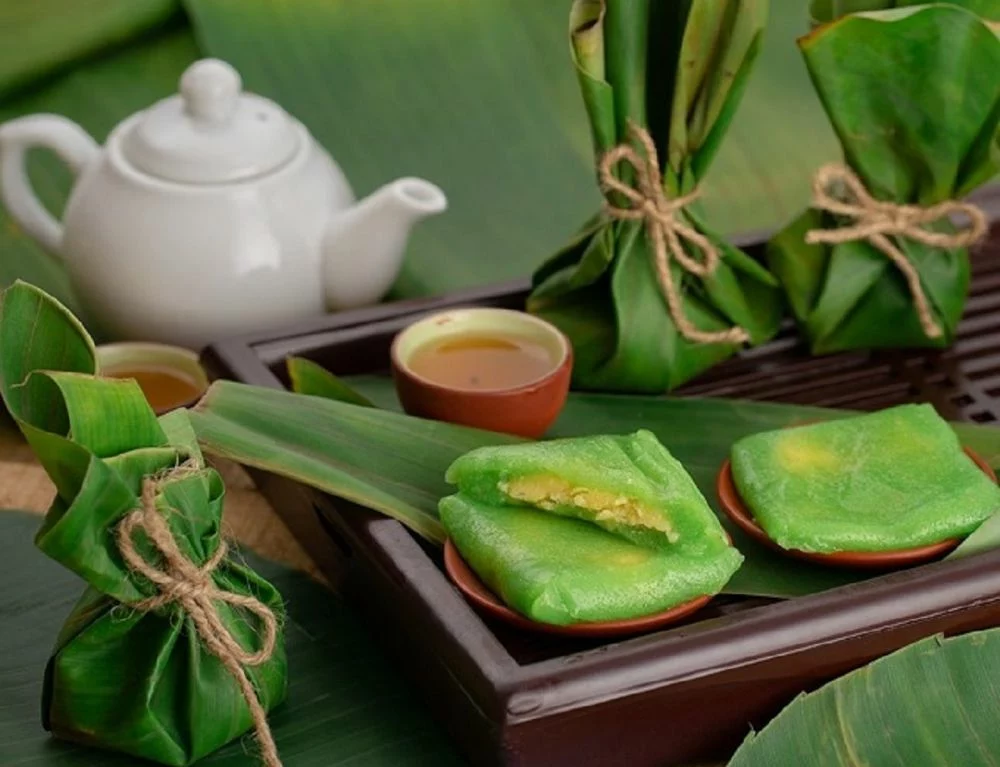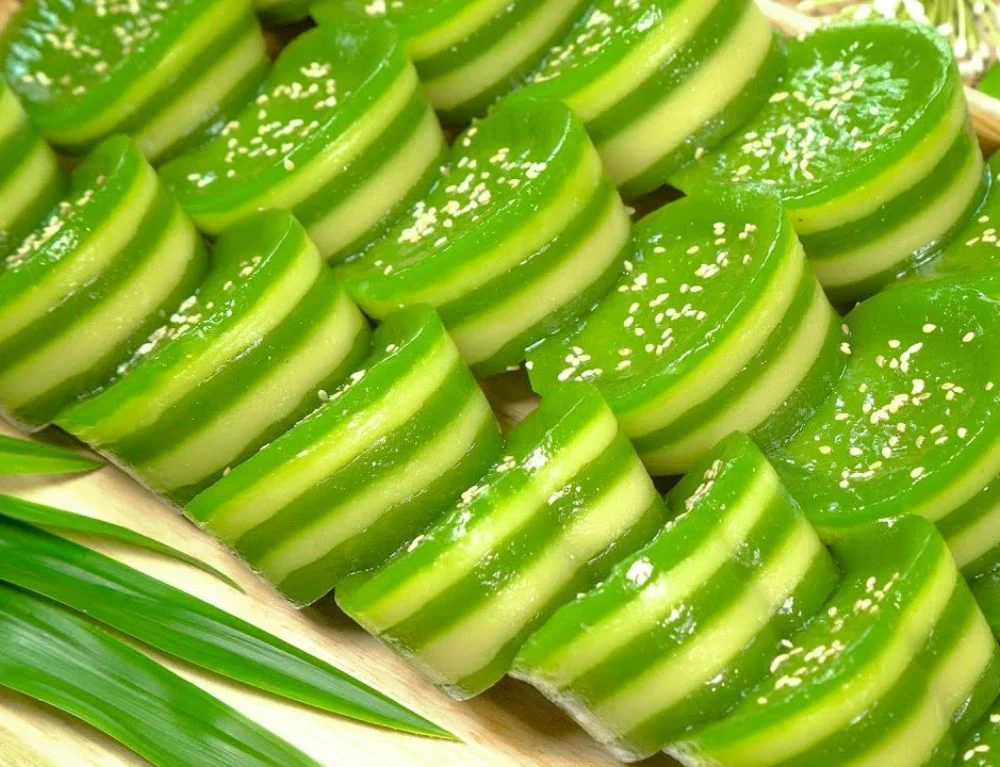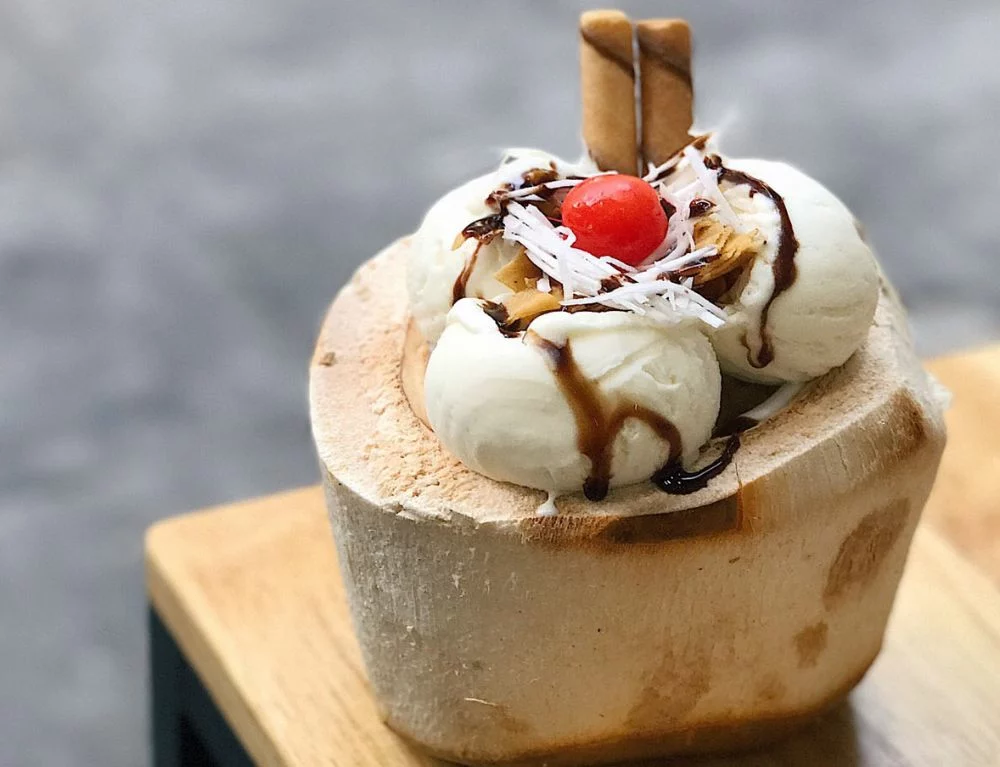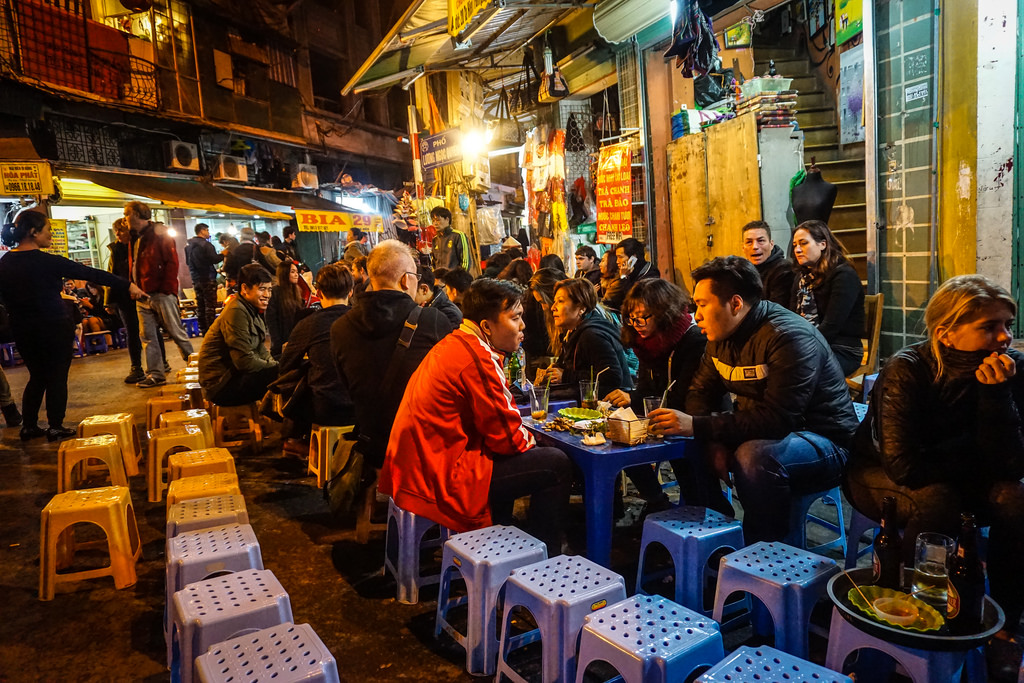“Vietnamese desserts offer a journey through every region.” Indeed, each Vietnamese dessert tells a story, reflecting the culture behind its creation and carrying the essence of its local roots. This country, celebrated for its vibrant flavors and rich culinary traditions, offers a dessert landscape as diverse and delightful as its cultural tapestry. While dishes like pho and banh mi are globally recognized, Vietnamese desserts remain one of the country’s best-kept culinary secrets. From colorful sweet soups to cakes made from local ingredients, Vietnamese sweets are an irresistible invitation to experience the country’s creativity and warmth, one spoonful at a time. To bring structure to this sweet exploration, Chapter categorizes Vietnamese desserts into the following groups:
- Sweet soups: che, yogurt, pudding
- Cakes and candies: Iconic desserts depending on the region
- Vietnamese ice creams
Let’s explore the sweet world of Vietnamese treats, including the famous che – Vietnamese dessert and more.
Table of Contents
Sweet soups – One of the most popular Vietnamese desserts
Che – The heart of Vietnamese sweet culture
Among Vietnam’s most beloved traditional desserts, chè holds a special place. More than just a sweet soup, it is a vibrant celebration of color, texture, and flavor — served either warm or chilled, always comforting. A true embodiment of Vietnam’s culinary creativity, this che Vietnamese dessert comes in countless regional variations, crafted from local ingredients such as mung beans, pomelo rind, lotus seeds, banana, tapioca pearls, coconut milk, and fragrant jellies. All these toppings are layered or mixed into a small cup, making this one of the most famous Vietnamese desserts that everyone should try at least once.

Here are some popular types:
- Chè bưởi: made with pomelo rind and mung beans
- Chè chuối: banana in coconut milk
- Chè hạt sen: lotus seed sweet soup
- Chè bắp: corn pudding with tapioca pearls
- Chè khúc bạch: almond panna cotta served with lychee and jelly
- Chè thập cẩm: a mix of all the above, layered in a cup.
How to make Vietnamese dessert che? Most recipes begin by cooking the base (such as mung beans or black-eyed peas) until tender, then adding coconut milk, sugar, and flavorings. You can add toppings like tapioca pearls, agar jelly, or shaved ice for added texture. Served either warm or cold, che is loved across Vietnam for its versatility and soothing sweetness.
At Chapter Dining, che is more than a dessert—it’s a tribute to Vietnam’s culinary heritage. Our chefs reinterpret this humble dessert with a philosophy of seasonality and sustainability, elevating it into a refined component of our Chapter menu. For the Sunshine Menu, chè bưởi is reimagined with a “zero-waste” approach: pomelo peel, often discarded, is meticulously rinsed and candied, transforming into a delicate component that harmonizes with mung beans and fragrant blossoms.
In the height of summer, the perfume of blooming pomelo and the ripe sweetness of Moc Chau strawberries are preserved in our refreshing che Vietnamese dessert. The result is a dessert that honors its rustic roots while embracing contemporary finesse, crafted with precision and imbued with memory.

Vietnamese yogurt – Tangy, silky, naturally balanced
Vietnamese-style yogurt is tangy and smooth. Variants like sữa chua nếp cẩm (black sticky rice yogurt), where the tang of fermented yogurt finds harmony with the rich, nutty profile of fermented black sticky rice.
Another summertime favorite is sữa chua thạch lá nếp (yogurt layered with pandan jelly). The natural green hue, subtle aroma, and tender texture of the jelly pair beautifully with the cool tang of the yogurt, creating a dessert that’s visually elegant and gently refreshing.
Equally enticing is hoa quả dầm. It’s a tropical fruit medley found in every corner of Vietnamese streets. This colorful creation blends jackfruit, mango, lychee, and dragon fruit with yogurt, condensed milk, and coconut cream. Each spoonful is an explosion of flavor — sweet, tangy, creamy, and utterly addictive.
For those exploring northern Vietnam, don’t miss the renowned yogurt of Ba Vi, crafted from local cow or goat’s milk. Its unique profile—mildly tart, subtly sweet, and exceptionally rich. This Vietnamese dessert reflects the purity of the region’s mountainous terroir.

Tofu & puddings
Then there’s tào phớ (tofu pudding), a silky, custard-like tofu dessert usually served with a light jasmine syrup or soy milk. It’s a comforting dessert, often enjoyed with crushed ice, turning it into a delicately refreshing escape from the summer heat. Traditional toppings, like red beans, grass jelly, tapioca pearls, and caramel, are thoughtfully curated to add both contrast and texture.
Vietnamese caramel pudding is a familiar favorite with a tropical reimagination. Here, the custard is chilled and crowned with a drizzle of coconut cream, translucent jellies, and shaved ice. This fusion of creamy, sweet, and cool makes each bite wonderfully balanced, simultaneously indulgent and refreshing. It’s one of those Vietnamese desserts that surprise and delight with every spoonful.

Cakes – Regional Vietnamese desserts
Vietnam’s regional diversity is reflected in its desserts, with each part of the country offering its unique sweet specialties. These delicacies are more than just treats. They are cultural icons, often deeply symbolic and lovingly passed down through generations.
There are some iconic cakes and sweet snacks that symbolize local culture:
Banh com – Hanoi
A signature treat from Hanoi, made from young green rice (cốm) and mung bean paste, wrapped in banana leaves. This dessert is not only a Hanoi specialty but also a popular souvenir. The delicate green hue of cốm, blended with soft glutinous rice and sweet mung bean filling, creates an unforgettable flavor.

Banh da ke – Bac Giang
While many villages across Vietnam make bánh đa kê, the version from Kê village in Bac Giang is especially distinctive. What makes it stand out is the nutty, crispy aroma of peanuts, sesame, and sweet potatoes, all combined with fragrant rice and crafted by the skilled hands of local artisans.

Banh phu the – Bac Ninh
Also known as the “husband and wife cake”, this dessert from Bac Ninh is often seen at weddings. It originated in the Lý dynasty, when Queen Y Lan created it as a gift for the king. The chewy, jelly-like skin paired with sweet mung bean filling is often topped with shredded coconut and toasted sesame for added fragrance and texture.

Chuoi nep nuong – Ben Tre
Originating from southern Vietnam, this dessert features grilled banana wrapped in sticky rice and banana leaves, cooked until golden. Crispy on the outside and soft inside, it’s typically served with coconut cream. Fried banana versions are also popular street snacks, found in markets and alleyways throughout the country.

Banh bo – Ho Chi Minh City
Also called Vietnamese honeycomb cake, known for its spongy, airy texture. Made from fermented rice flour, bánh bò is soft and aromatic with a gentle coconut flavor. It comes in many versions—steamed or baked—and is often infused with pandan or coconut milk for extra depth.

Bánh da lon – Southern Vietnam
Recently named one of the top 100 best cakes in the world by TasteAtlas, this steamed layer cake features alternating layers of chewy mung bean and pandan-flavored dough. Traditionally made with tapioca starch, rice flour, and coconut milk, the yellow and green layers create both a visual and flavorful harmony.

At Chapter, each tasting menu concludes with a petit four — our tribute to Vietnamese traditional desserts reimagined through modern pastry techniques. On the Sunshine journey, the dessert course is inspired by three iconic cakes: bánh gai, bánh gạo, and bánh cốm, offering guests a refined and memorable end to their dining experience.

Vietnamese ice creams: Light, tropical, and local dessert
Unlike the cream-heavy Western styles, Vietnamese ice creams (or kem) use coconut milk, giving them a lighter and more tropical profile. This Vietnamese dessert draws flavor from the landscape itself — green rice (cốm) from Hanoi’s autumn harvest, sweet durian and mangoes from the Mekong Delta, and lychee or dragon fruit from the sun-kissed orchards of northern provinces. Each scoop is a sensory journey through the regions of Vietnam.
Among the many regional specialties, three stand out—not just for their distinct taste but for the way they celebrate local culture and culinary craft.
Kem xôi – Ice cream with sticky rice
Perhaps the most unexpected yet beloved pairing, this Vietnamese dessert marries two seemingly contrasting elements: warm sticky rice and cool coconut ice cream. At its core lies a scoop of silky, fragrant coconut ice cream, resting atop a bed of glutinous sticky rice, often tinged with the pale green of young pandan leaves. What makes kem xôi so captivating is its play on temperature and texture. The rice, tender and warm, contrasts with the icy cream, while toasted shredded coconut and roasted peanuts sprinkled on top add a subtle crunch and nuttiness.

Kem bơ – Avocado ice cream
Avocado ice cream turns the rich, buttery fruit into a chilled dessert that feels both indulgent and nourishing. Blended until smooth, the ripe avocado offers a naturally creamy base, lightly sweetened and often finished with a swirl of condensed milk or coconut syrup. At local stalls in Da Lat, where avocados thrive, you’ll find this Vietnamese dessert served in frosty glasses, paired with scoops of coconut or vanilla ice cream and topped with a drizzle of coconut cream.

Kem dừa – Coconut ice cream
Few desserts capture the carefree charm of Vietnam’s seaside towns like kem dừa. Served in a freshly halved coconut shell, this dessert is a feast for the eyes and the tastebuds. The ice cream itself, made with coconut milk and sometimes shaved coconut meat, is creamy yet light — a perfect canvas for a symphony of toppings. Typical garnishes include colorful jellies, chewy nata de coco, toasted peanuts, and slices of dried tropical fruit. The shell not only acts as a natural bowl but also enhances the aroma of the dessert, with each spoonful infused with the faint scent of coconut husk.

Vietnamese desserts are more than just sweet dishes. They’re expressions of culture, history, and innovation. From humble street stalls to high-end restaurants, these sweets offer travelers and food lovers an unforgettable taste of tradition. So next time you explore Vietnamese cuisine, don’t just stop at pho or banh mi. Take a detour into the vibrant, colorful, and comforting world of Vietnamese desserts. Your taste buds will thank you.




